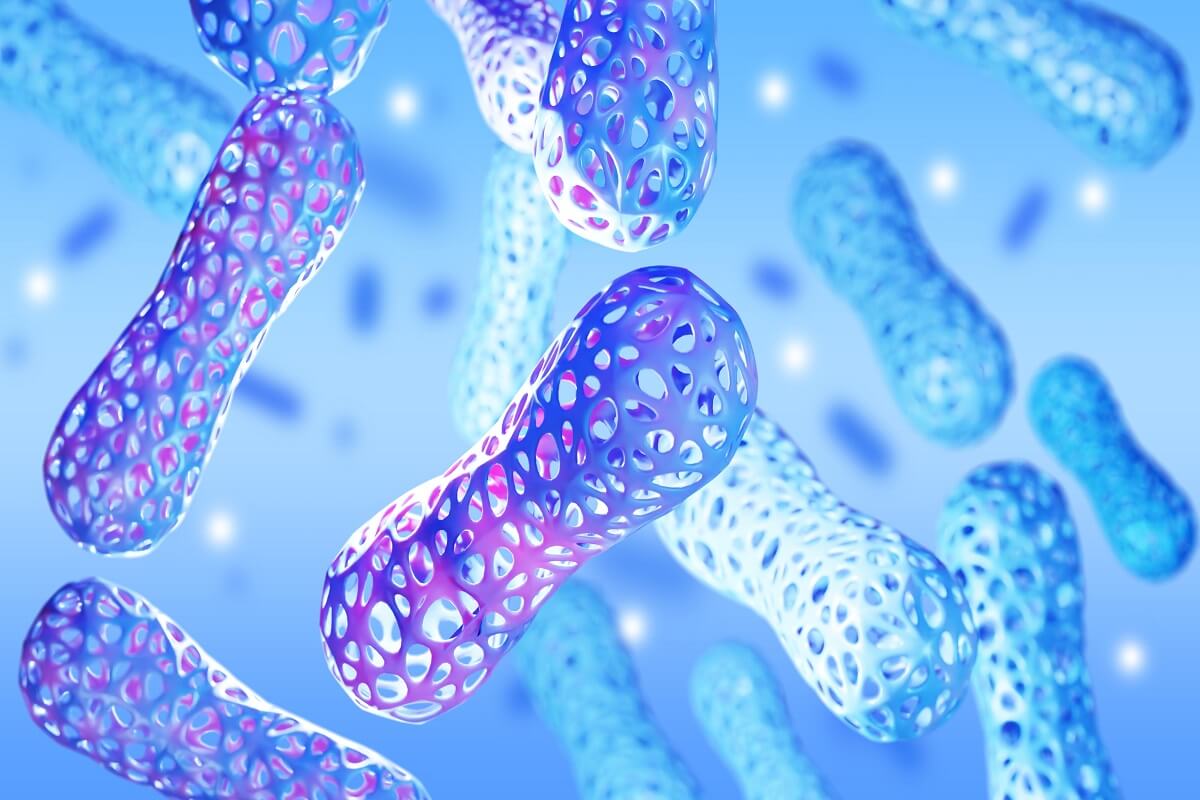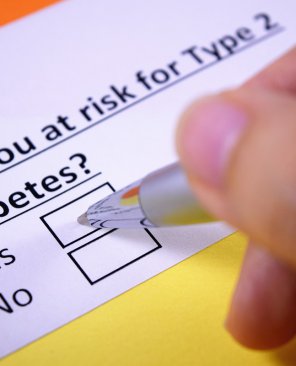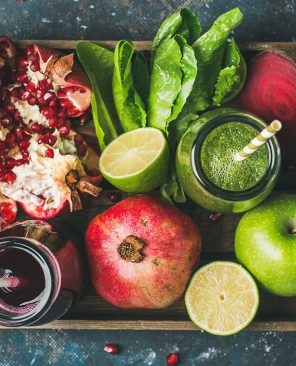
29 Jan 2024 The oral microbiome in health and disease
You’ve likely heard a lot of mention of the gut microbiome over the past couple of years in relation to health and disease. However, you may be less aware of the fact that we have multiple microbiomes which include the oral microbiome, skin microbiome, and in females, the vaginal microbiome. Together, the microorganisms which inhabit these microbiomes perform a host of functions which support both the local environment for example, the mouth in the case of the oral microbiome, as well as wider systemic health – meaning affecting the whole body.
What is a microbiome?
A microbiome is a collection of billions of diverse species of microorganisms including bacteria, fungi, viruses, and protozoa that inhabit specific areas of the human body as previously mentioned, the gut, mouth, skin, and vagina. Our microbiomes are as unique as we are, and every microbiome will be made up of different strains and amounts of these microorganisms, which are initially passed on to us at birth. In a healthy microbiome there is a symbiotic – mutually beneficial – relationship that exists between the microorganisms and the person (host). The term alpha-diversity is a measure of microbiome diversity applicable to a single person whilst beta diversity is a measure of the variability, similarity, or dissimilarity between individuals. Our individual alpha-diversity depends on both the microbiome we inherited and ongoing interactions – known as epigenetics – with the outside world. In the oral microbiome this may include interactions which influence the chemical and physical conditions of the oral cavity, oral hygiene and dietary and lifestyle habits (1).
Historically all bacteria were initially considered harmful, especially pathogenic strains. However, it is now recognised that commensal bacteria are beneficial, support health, and protect from overgrowth and invasion from more harmful pathogenic species. It is important to note however that pathogenic species naturally inhabit the microbiome. In healthy individuals, there is a delicate balance between the commensal bacteria and the potentially pathogenic bacteria. Disruption to this balance is referred to as bacterial dysbiosis and indicates a loss of beneficial bacteria, excessive growth of harmful bacteria or, loss of overall microbial diversity (2). This can occur for many reasons including health status (presence of inflammation and disease), dietary and lifestyle habits including the foods we eat, how much we sleep, our exposure to chronic stress, and use of pharmaceuticals and/or antibiotics (3).

The oral microbiome in more detail
The oral cavity is one of the best-studied microbiomes to date despite much of the public and media focus given to the gut microbiome. The Human Oral Microbiome Database (HOMD) was set up in the early noughties and utilises next-generation sequencing (NGS) technology to create a library of all known commensal and pathogenic microorganisms. This database has helped establish and track the links between oral microbiomes and health based on a genome-wide analysis. The information is paving the way for greater understanding of many diseases as well as pioneering novel therapies. So, let’s take a closer look at the oral microbiome.
In microbial terms, the oral microbiome has the second largest and most diverse community of microorganisms after the gut, with over 700 different species. Our mouth is the first point of exposure to the external world, making it vulnerable to the effects of environmental factors (4). Every time we breathe, eat, and drink we open ourselves to attack from external pathogens, so the oral microbiome is quite literally the body’s first line of defence. It consists of multiple unique habitats, including the saliva, tongue, teeth, gums, buccal mucosa, and palate. Each habitat forms what is called a biofilm on the multiple surfaces of the mouth which consists predominantly of bacteria. Of these, saliva is considered the very first line of defence due to its role in mastication. It does this with three key mechanisms (7):
- Regulating acidity in the mouth by buffering pH, creating an environment that allows beneficial bacteria to flourish, versus acid-loving pathogenic bacteria.
- Flushing external substances that may have accumulated in the mouth.
- Providing a continuous supply of nutrients for the beneficial bacteria.
The special environment of the oral cavity, with its stable pH of 6.5–7.0 of saliva, moisture, and its temperature of an average of 37 °C, creates favourable conditions necessary for the growth of microorganisms. These include the six prevalent groups of bacteria found in the oral microbiome which are Proteobacteria, Firmicutes, Bacteroidetes, Actinobacteria, Spirochaetes, and Fusobacteria (5).
We previously touched on bacterial dysbiosis, and when this occurs in the oral microbiome it can act as a risk factor for the development of oral diseases such as periodontitis (advanced gum disease), dental caries (tooth decay), oral ulcers, halitosis (bad breath) and oral cancer (6) which we shall look at in more detail further on.

The oral and gut microbiome axis – a bidirectional highway of communications.
The oral microbiome forms the start of the gastrointestinal tract – a continuous tube that runs from the mouth to the anus and includes organs such as the mouth, stomach, small and large intestines. Microorganisms from the oral microbiome can travel into the GI tract via ingested saliva in food and drinks (6). Translocation of oral micro-organisms from the mouth to the gut is one direction of a bi-directional movement of microorganisms, which can also see microbes translocate upwards from the gut to the mouth. This is known as the oral-gut microbiome axis. This bi-directional interaction is important to immune signalling however, the act of travelling bacteria can lead to dysbiosis, contributing to the onset of disease states. To prevent this, the oral-gut-barrier has three key mechanisms to prevent colonisation of potential pathogens in the gut (7):
- Firstly, gastric acid release creates a highly acidic environment in the stomach, which is unfavourable for bacterial growth or overgrowth.
- Secondly, bile release in the small intestine helps to break down bacteria and keep microbial communities in balance.
- Thirdly, the integrity of the gut wall protects from pathogenic invasion and transfer of microbes from the intestines into the blood stream.
Dysbiosis in the oral microbiome
Dysbiosis of the oral microbiome, similarly to the gut microbiome, typically occurs due to epigenetic diet and lifestyle factors that impact the balance and diversity of the microorganisms. Genetic predisposition can play a role in the susceptibility of some oral diseases, however there are many more modifiable factors that can influence the overall health of the oral microbiome:
Diet
 The shift from a hunter-gatherer diet to a more “Westernised” diet has had a major impact on microorganism diversity, or lack of diversity and a higher prevalence of oral diseases has been observed in populations following a western diet (4) The wild diet of our hunter-gatherer predecessors consisted largely of plant foods, berries and game. The introduction of agriculture and industrial manufacturing has led to a diet of refined ultra processed foods consisting of high-sugar, dairy, farmed meats, refined vegetable oils and simple carbohydrates (4). In addition, excess intake of sugar in the modern diet is a huge contributor to dental caries, the mechanisms for this being pathogenic bacteria metabolise the sugar and as a result produce acids that erode the tooth enamel (10).
The shift from a hunter-gatherer diet to a more “Westernised” diet has had a major impact on microorganism diversity, or lack of diversity and a higher prevalence of oral diseases has been observed in populations following a western diet (4) The wild diet of our hunter-gatherer predecessors consisted largely of plant foods, berries and game. The introduction of agriculture and industrial manufacturing has led to a diet of refined ultra processed foods consisting of high-sugar, dairy, farmed meats, refined vegetable oils and simple carbohydrates (4). In addition, excess intake of sugar in the modern diet is a huge contributor to dental caries, the mechanisms for this being pathogenic bacteria metabolise the sugar and as a result produce acids that erode the tooth enamel (10).- Alcohol has been shown to influence the oral microbiome by reducing pH and saliva production. Drinkers in a 2018 study were shown to have a higher alpha-diversity, with some bacterial species in abundance and others depleted versus non-drinkers indicating that alcohol affects microbial composition. Ethanol is the largest component of alcohol and has an antibacterial effect, like mouthwash, and can kill bacteria indiscriminatingly which can lead to dysbiosis. Ethanol can be used as a fuel by pathogenic bacteria, in much the same way as simple sugar, contributing to dental caries and periodontitis and potentially affecting microbial functional pathways (11).
Lifestyle
- Smoking has been shown to cause dysbiosis, particularly in cigarettes that contain higher levels of toxic chemicals, affecting the oral microbiome through the following mechanisms (12)
- Oxygen deprivation: allowing pathogenic bacteria that can exist without oxygen, otherwise known as anaerobic respiration, to thrive.
- Biofilm build-up, leading to loss of colonization resistance and therefore the expansion and invasion of pathogenic bacteria in the gums and teeth.
- Stress (physical and psychological) can affect the diversity of the oral microbiome and has been shown to alter dental plaque to resemble that of periodontitis progression (13).
- Bacterial counts in saliva typically increase markedly during sleep which is why dental hygiene recommendations are to clean teeth before bed. However, oral biofilms are also affected by sleep with changes seen in microbiome composition on awakening than before sleep (14).
Oral hygiene
- Oral hygiene in the form of brushing teeth and flossing. Whilst these dental hygiene practices may prevent pathogenic bacterial growth and help maintain healthy teeth and gums, this may come at a cost for the balance of the oral microbiome.
- Sodium lauryl sulfate (SLS) in toothpaste is an ingredient that creates a foamy texture and gives the feeling of a fresher cleaner mouth. This ingredient can compromise the integrity of the oral mucosa (the soft tissue that lines the mouth) and for individuals who are prone to mouth ulcers, it can further exacerbate their occurrence (9)
- Antibacterial mouthwashes can harshly strip the oral cavity of both the beneficial bacteria as well as the harmful pathogens, so the very hygiene products used to aid oral hygiene may be involved in the onset of dysbiosis of the oral microbiome.
- Similarly, a study of water polo players found that the antibacterial properties of chlorine used in swimming pools had any impact on microbial balance unfavourably altering the composition of the oral microbiome (10).
From dysbiosis to the development of oral diseases
Dysbiosis from any of modifiable factors discussed above can lead to the development of the four most common oral diseases, periodontitis (gum disease), dental caries, ulcers, and halitosis (bad breath). Each of these are discussed in the table below:
| Periodontitis | Advanced gum disease starts with mild inflammation of the gums known as gingivitis. Left untreated, this can develop into periodontitis where chronic inflammation triggered by pathogenic bacteria causes the gums surrounding the teeth to pull away leading to swollen, bleeding gums and ultimately tooth loss (15).
The key mechanism of periodontitis is the unhealthy build-up of the biofilm allowing pathogenic invasion into the gums. Individual risk factors include poor oral health, stress, smoking and a diet low in Vitamin C & D (15). |
| Dental Caries | Sugar’s role in tooth decay is well established however the mechanisms in which the oral microbiome affect tooth decay is less clear. Pathogenic bacteria metabolise sucrose sugar and in doing so produce acids which increase the pH of the oral cavity and make it more acidic – exactly the condition in which pathogenic bacteria thrive. These acids demineralise tooth enamel which can lead to dental caries (10). A recent systematic review concluded that bacterial diversity can be altered by a high sugar intake resulting in a decline in some strains and predominance of the pathogenic bacteria that can cause dental caries (1). This suggests loss of microbiome diversity is the main mechanism at play in dental caries.
|
| Ulcers | Ulcers are painful lesions in the oral cavity that cause difficulty in mastication and speech and can be a direct result of mechanical trauma such as biting of the gum.
Broadly speaking they can be grouped as: Acute – Lasting no more than a few weeks and regressing spontaneously. Chronic – Persisting for several weeks to months (17).
There are multifactorial root causes for ulcers including genetic predisposition, hormone fluctuations, stress, diet (particularly food allergies and vitamin deficiencies) and an upregulated immune response, all of which can modulate the pathogenic mechanisms associated with diseases of the oral lining (19) (20). Research is still lacking in how the role of bacteria alteration can lead to this pathogenic pathway (20). Associations have been made with dysbiosis in the oral microbiome where the defence mechanism of the lining of the mouth is weakened, leaving the host vulnerable to mouth ulcers and other oral lesions (19). Commonly associated bacteria strains with oral ulcers are an increase in E. coli and Alloprevotella and a decrease in Streptococcus (17). |
| Halitosis | Otherwise known as bad breath, can affect up to 60% of the population. There are two types (21):
• Physiological – Generally caused by saliva retention and decaying of entrapped food particles between teeth. The most common symptom of this is foul morning breath. • Pathological – Which can be separated into extra-oral-halitosis (EOH) or intra-oral halitosis (IOH). 80-90% of IOH is due to the anaerobic activity of pathogenic bacteria, producing volatile sulphur compounds, particularly on the tongue. Halitosis is mainly caused by Porphyromonas gingivalis , T. denticola, and T. forsythia, the same species that have been associated with Periodontitis. However poor oral hygiene, periodontitis and caries can also cause halitosis (15). |
The link between oral dysbiosis and other diseases of the body.
Recent research has started to reveal the link between dysbiosis of the oral microbiome and diseases extending to other parts of the body (systemic). These diseases include cardiovascular disease (CVD), gastrointestinal and colon cancer, diabetes mellitus and Alzheimer’s disease.
Pathogens present in periodontitis and the substances they produce (metabolites) can induce a wider immune response including chronic inflammation that can lead to both local and systemic diseases. Evidence suggests pathogenic bacteria can enter the blood circulation through the damaged gums or they can be ingested taking them further down the digestive tract (21). Patients with periodontitis have been reported to ingest higher levels of the key periodontal pathogen Porphyromonas gingivalis which is able to tolerate the highly acidic environment of the stomach and therefore survive and proliferate, contributing to dysbiosis of the gut (6).
Cardiovascular disease
A recent systematic review identified a positive relationship between periodontitis and CVDs. Whilst there are common risk factors shared between the two such as smoking, diet, family history and age, the causal mechanisms identified between periodontitis and CVD are:
- Local inflammation in the gums that can lead to inflammation in the heart and blood vessels.
- Translocation of pathogenic bacteria in the bloodstream to the heart causing plaque formation in the blood vessels (22)
Type 2 Diabetes Mellitus (T2DM)
 A two-way relationship has been identified between periodontitis and Type 2 Diabetes Mellitus. The increased systemic inflammatory response caused by periodontitis can lead to dysregulation of blood sugars and insulin resistance (21). A systematic review and meta-analysis showed prevalence of periodontitis is higher in individuals with T2DM and there is an increased risk of developing periodontitis in individuals with diabetes (24).
A two-way relationship has been identified between periodontitis and Type 2 Diabetes Mellitus. The increased systemic inflammatory response caused by periodontitis can lead to dysregulation of blood sugars and insulin resistance (21). A systematic review and meta-analysis showed prevalence of periodontitis is higher in individuals with T2DM and there is an increased risk of developing periodontitis in individuals with diabetes (24).
Recent studies have linked oral microbial dysbiosis to a higher brain Aβ load and the development of Alzheimer’s disease in humans. The presence of oral-derived microorganisms have been identified in the brains of patients with Alzheimer’s disease and other neurodegenerative diseases (25).
Nutrition and Lifestyle strategies to support the oral microbiome.
There are many modifiable nutrition and lifestyle strategies to support a healthy diversity of microorganisms in the oral microbiome.
Whole-food diet
Favouring a predominantly whole-food diet rich in vitamins, minerals, and fibre helps maintain the pH balance and nourish the good bacteria that protect the oral cavity.
Reducing foods, such as farmed animal meat, dairy products, refined vegetable oils, and processed cereals, which negatively affect the composition of the microbiota, leading to an increased representation of acid-producing and acid-tolerant organisms and periodontal pathogens (31).
Probiotics
Probiotic supplementation has been shown to improve periodontal disease characteristics such as plaque/biofilm formation and preventing plaque formation. This is achieved by reducing the pH of saliva and stimulating the production of antioxidants, both of which prevent pathogenic bacteria from flourishing (26).
 Polyphenols
Polyphenols
Polyphenols, natural compounds found in large quantities in red pigment fruits and vegetables such as berries, red cabbage & radishes have been shown to have health benefits including antioxidant, anti-bacterial and anti-inflammatory properties. Several of these mechanisms have been proposed in oral diseases helping to reduce the volatile sulphur compounds (VSCs) symptomatic in halitosis (21)
Antimicrobial herbs
Traditional medicines have historically used anti-microbial plants and herbs such as aloe vera, green tea, fennel, turmeric, sage, and chamomile as prevention for oral diseases. The benefit of a natural approach to supporting the oral microbiome is that plants can act on a broader range of organisms, preventing the pathogenic growth of anti-bacterial, anti-fungal, anti-viral and anti-yeast microorganisms (28).
A recent systematic review, focused on effectiveness of antimicrobial herbs and plants including green tea, chamomile, and thyme on oral diseases in adolescents found improvements in gingivitis with limited side effects (29).
Hydration
Drinking adequate daily water intake* supports saliva production and flushing away any pathogenic bacteria to the acidic environment of the stomach where they will likely perish.
*Public health guidelines recommend 6- 8 glasses of water / daily (30).

Oral Hygiene
Maintaining a healthy oral cavity by regular flossing and brushing teeth twice daily with a toothpaste not containing SLS can generally support a healthy oral microbiome and:
- Reduce the risk of bacterial dysbiosis and halitosis.
- Promote strong integrity of the oral cavity lining.
Summary
It is important to understand the delicate balance that exists in the oral microbiome between the commensal and pathogenic microorganisms, and how they work in harmony with the host to promote health.
Dysbiosis can be caused by multiple factors and can be a risk factor for local oral diseases such as periodontitis, dental caries, halitosis, and mouth ulcers. Research also shows how dysbiosis in the oral microbiome can be involved in the onset of disease states in other parts of the body.
Diet, lifestyle and oral hygiene practice support a healthy oral microbiome and reduce the risk factors for developing oral and systemic disease states.
Author: Victoria Mortimer, Nutritional Therapy Student CNELM and Student BANT member
References
- Angarita-Díaz M del P, Fong C, Bedoya-Correa CM, Cabrera-Arango CL. Does high sugar intake really alter the oral microbiota?: A systematic review. Clin Exp Dent Res. 2022;8(6):1376–90.
- Degruttola AK, Low D, Mizoguchi A, Mizoguchi E. Current understanding of dysbiosis in disease in human and animal models. Inflamm Bowel Dis. 2016;22(5):1137–50.
- Hrncir T. Gut Microbiota Dysbiosis: Triggers, Consequences, Diagnostic and Therapeutic Options. Microorganisms. 2022 Mar 7;10(3):578. doi: 10.3390/microorganisms10030578. PMID: 35336153; PMCID: PMC8954387.
- Deo PN, Deshmukh R. Oral microbiome: Unveiling the fundamentals. J Oral Maxillofac Pathol [Internet]. 2019 Jan 1 [cited 2023 Dec 17];23(1):122. Available from: /pmc/articles/PMC6503789/
- Santonocito S, Giudice A, Polizzi A, Troiano G, Merlo EM, Sclafani R, et al. A Cross-Talk between Diet and the Oral Microbiome: Balance of Nutrition on Inflammation and Immune System’s Response during Periodontitis. Nutrients. 2022;14(12).
- Marsh PD, Do T, Beighton D, Devine DA. Influence of saliva on the oral microbiota. Periodontol 2000 [Internet]. 2016 Feb 1 [cited 2023 Dec 17];70(1):80–92. Available from: https://onlinelibrary.wiley.com/doi/full/10.1111/prd.12098
- Olsen I, Yamazaki K. Can oral bacteria affect the microbiome of the gut? J Oral Microbiol [Internet]. 2019;11(1). Available from: https://doi.org/10.1080/20002297.2019.1586422
- Park SY, Hwang BO, Lim M, Ok SH, Lee SK, Chun KS, et al. Oral–gut microbiome axis in gastrointestinal disease and cancer. Cancers (Basel). 2021;13(7):1–20.
- Kalabiska I, Annar D, Keki Z, Borbas Z, Bhattoa HP, Zsakai A. The Oral Microbiome Profile of Water Polo Players Aged 16–20. Sports. 2023;11(11):216.
- Side effects of sodium lauryl sulfate applied in toothpastes: A scoping review – PubMed [Internet]. [cited 2023 Dec 17]. Available from: https://pubmed.ncbi.nlm.nih.gov/35506963/
- Dang MH, Jung JE, Choi HM, Jeon JG. Difference in virulence and composition of a cariogenic biofilm according to substratum direction. Sci Rep [Internet]. 2018;8(1):1–8. Available from: http://dx.doi.org/10.1038/s41598-018-24626-2
- Liao Y, Tong XT, Jia YJ, Liu QY, Wu YX, Xue WQ, et al. The Effects of Alcohol Drinking on Oral Microbiota in the Chinese Population. Int J Environ Res Public Health. 2022;19(9).
- Duran-Pinedo AE, Solbiati J, Frias-Lopez J. The effect of the stress hormone cortisol on the metatranscriptome of the oral microbiome. NPJ Biofilms Microbiomes. 2018 Oct 18;4:25. doi: 10.1038/s41522-018-0068-z. PMID: 30345066; PMCID: PMC6194028.
- Sotozono M, Kuriki N, Asahi Y, Noiri Y, Hayashi M, Motooka D, Nakamura S, Yamaguchi M, Iida T, Ebisu S. Impact of sleep on the microbiome of oral biofilms. PLoS One. 2021 Dec 9;16(12):e0259850. doi: 10.1371/journal.pone.0259850. PMID: 34882696; PMCID: PMC8659294.
- Akimbekov NS, Digel I, Yerezhepov AY, Shardarbek RS, Wu X, Zha J. Nutritional factors influencing microbiota-mediated colonization resistance of the oral cavity: A literature review. Front Nutr. 2022;9(October).
- Kozak M, Pawlik A. The Role of the Oral Microbiome in the Development of Diseases. Int J Mol Sci. 2023;24(6).
- Willis JR, Gabaldón T. The human oral microbiome in health and disease: From sequences to ecosystems. Microorganisms. 2020;8(2):1–28.
- Oral Ulcers – A Review [Internet]. [cited 2023 Dec 16]. Available from: https://austinpublishinggroup.com/dental-disorders/fulltext/jdod-v4-id1098.php
- Min Z, Yang L, Hu Y, Huang R. Oral microbiota dysbiosis accelerates the development and onset of mucositis and oral ulcers. Front Microbiol. 2023;14(February):1–11.
- Gasmi Benahmed A, Noor S, Menzel A, Gasmi A. Oral Aphthous: Pathophysiology, Clinical Aspects and Medical Treatment. Arch Razi Inst. 2021;76(5):1155–63.
- Hampelska K, Jaworska MM, Babalska ZŁ, Karpiński TM. The role of oral microbiota in intra-oral halitosis. J Clin Med. 2020;9(8):1–17.
- Bui FQ, Almeida-da-Silva CLC, Huynh B, Trinh A, Liu J, Woodward J, et al. Association between periodontal pathogens and systemic disease. Biomed J [Internet]. 2019;42(1):27–35. Available from: https://doi.org/10.1016/j.bj.2018.12.001
- Etta I, Kambham S, Girigosavi KB, Panjiyar BK. Mouth-Heart Connection: A Systematic Review on the Impact of Periodontal Disease on Cardiovascular Health. Cureus. 2023;15(10).
- Stöhr J, Barbaresko J, Neuenschwander M, Schlesinger S. Bidirectional association between periodontal disease and diabetes mellitus: a systematic review and meta-analysis of cohort studies. Sci Rep [Internet]. 2021;11(1):1–9. Available from: https://doi.org/10.1038/s41598-021-93062-6
- Wan, J.; Fan, H. Oral Microbiome and Alzheimer’s Disease. Microorganisms 2023, 11, 2550. https://doi.org/10.3390/microorganisms11102550
- Gheisary Z, Mahmood R, Harri Shivanantham A, Liu J, Lieffers JRL, Papagerakis P, et al. The Clinical, Microbiological, and Immunological Effects of Probiotic Supplementation on Prevention and Treatment of Periodontal Diseases: A Systematic Review and Meta-Analysis. Nutrients. 2022;14(5).
- Applications T. Prevention , and Therapeutic Applications. 2023;
- Parham S, Kharazi AZ, Bakhsheshi-Rad HR, Nur H, Ismail AF, Sharif S, et al. Antioxidant, Antimicrobial and Antiviral Properties of Herbal Materials. Antioxidants [Internet]. 2020 Dec 1 [cited 2023 Dec 17];9(12):1–36. Available from: /pmc/articles/PMC7767362/
- Amanpour S, Javar MA, Sarhadinejad Z, Doustmohammadi M, Moghadari M, Sarhadynejad Z. A systematic review of medicinal plants and herbal products’ effectiveness in oral health and dental cure with health promotion approach. J Educ Health Promot [Internet]. 2023 [cited 2023 Dec 17];12(1):306. Available from: /pmc/articles/PMC10670971/
- The Eatwell Guide – GOV.UK [Internet]. [cited 2023 Dec 17]. Available from: https://www.gov.uk/government/publications/the-eatwell-guide
- Santonocito S, Giudice A, Polizzi A, Troiano G, Merlo EM, Sclafani R, Grosso G, Isola G. A Cross-Talk between Diet and the Oral Microbiome: Balance of Nutrition on Inflammation and Immune System’s Response during Periodontitis. Nutrients. 2022 Jun 11;14(12):2426. doi: 10.3390/nu14122426. PMID: 35745156; PMCID: PMC9227938.


